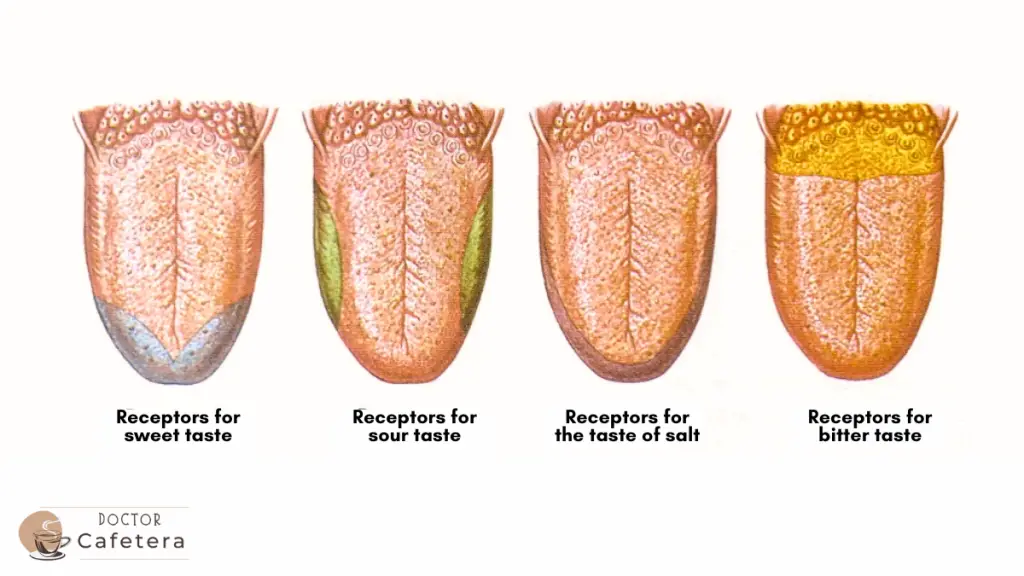Coffee is one of the most loved and popular beverages worldwide. Its unmistakable aroma and flavor make it the perfect companion for waking up in the morning, taking a break from work, or enjoying a get-together with friends and family.
It is difficult to imagine a day without coffee, as it has become integral to our lives. However, we often consume the same type of coffee without even considering that there are different blends and brands that can offer unique and distinctive flavors.
Each variety of coffee has a unique flavor and characteristics that distinguish it from the rest. In this article, I will teach you how to distinguish from the fruity and floral nuances to the earthy and bitter flavors each type of coffee offers.
Difference between taste and flavor
To better understand coffee, it is important to distinguish between two elements that define and classify it: taste and flavor.
Taste is one of our five senses and is determined by the receptors of the taste buds. This sense includes five main tastes: bitter, sour, sweet, salty, and umami, which determine our perception of food and drink.
These sensations are known as tastes, but in reality, the taste is a more complex sense that perceives other elements, such as aroma, touch, and flavor. In addition, other aspects such as texture, temperature, or astringency are also part of our perception of taste.
Description of coffee flavors
It is essential that the coffee has a balance of diverse flavors and that no sensory characteristic, including the basic flavors, is dominant over the others.
Sweetness
The sweetness in coffee is an important flavor due to the presence of natural sugars and other compounds, varying according to the origin and roasting level of the coffee. It is important to learn to appreciate coffee’s natural sweetness and look for coffees that show it in their flavor profile.
The sweetness balances the other flavors and can create a complete taste experience. Adding sugar is unnecessary since a good quality coffee can have enough natural sweetness.
Salty
Unlike the sweet and bitter flavors common in coffee, the salty flavor is not typical in coffee.
Salt in coffee generally results from a bad preparation practice or accidental contamination.
Some flavored coffees may have artificial salty notes to mimic certain flavor profiles, but these are not traditional. In summary, the salty taste is not a desired flavor in coffee and can indicate a preparation problem or accidental contamination.
Acidity
The acidity of coffee refers to the taste sensation felt on the tongue and is not necessarily an acidic or sour taste. Instead, acidity can be described as a bright and lively sensation that can vary in intensity and flavor.
The acids in coffee are developed during the bean’s growth process and are conserved during roasting. Among them are:
- Malic acid: Provides a tart flavor similar to that of green apples.
- Citric acid: It has a taste more similar to citrus fruits.
- Acetic acid: It is created during roasting, reminiscent of the flavors of wine and red fruits.
- Lactic acid: Gives a round and creamy mouthfeel.
- Phosphoric acid: Gives a sensation typical of effervescent drinks.
The acidity will depend on the origin of the coffee bean, such as the soil, altitude, and temperature. Also, the transformation by “natural” and “washed” methods.
Bitter
The bitter taste is one of the most common tastes perceived after drinking coffee. The polyphenols present in the beverage, besides protecting against cardiovascular risks, interact with the proteins of the saliva to determine the intensity of the bitter taste.
The amount of substances extracted from coffee during the preparation process also influences its bitterness, influenced by factors such as roasting, water temperature, extraction technique, and extraction time.
In addition, caffeine has a bitter taste, meaning that decaffeinated coffee generally has a less bitter taste than regular coffee.
Umami
The umami taste refers to one of the five basic taste sensations (along with sweet, salty, sour, and bitter) and is described as a savory sensation, often described as “meaty” or “sweet and sour”. Although traditionally associated with Japanese cuisine, umami flavor has been found to be present in many foods and beverages, including coffee.
The umami flavor in coffee comes from amino acids found in the beans. In particular, glutamic acid is an amino acid that contributes to the umami flavor of coffee. During the roasting process, glutamic acid is converted into pyrrolidone carboxylic acid, which is responsible for the umami notes in coffee.
Conclusion
In spite of being a very common beverage, coffee encloses a world of flavors and nuances that make it unique.
Even the mere addition of sugar determines a change in flavor; instead of what we could discover with a small tasting, tasting a few spoonfuls of one blend and then another, the aftertaste, the sensation that it will leave in the mouth.
Each variety of coffee has a unique taste and characteristics that distinguish it from the rest, from fruity and floral nuances to earthy and bitter flavors. Discovering all these options can be an exciting and rewarding experience.
It is important to remember that the perception of flavors (bitter, sour, sweet, salty, and umami) varies from person to person and can be influenced by additions such as sugar, making each cup taste different and personalized.
